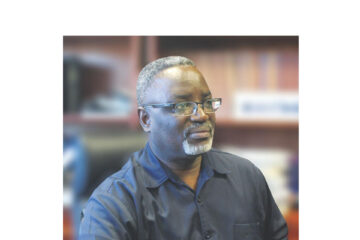This week, Namibia witnessed a moment of quiet revolution in the nation’s healthcare system. The Motor Vehicle Accident (MVA) Fund’s donation of a state-of-the-art Lodox full-body X-ray machine to the Ministry of Health and Social Services marks not only a milestone for Katutura Intermediate Hospital but also a shining example of what can be achieved through public-private collaboration in addressing Namibia’s critical infrastructure challenges.
Valued at over N$13 million, this generous gift is far more than a piece of medical equipment; it is a lifeline. Installed at the Katutura Intermediate Hospital’s emergency unit, the Lodox machine is the first of its kind in Namibia and brings with it the power to transform trauma care in our country. It provides full-body scans in just 13 seconds, dramatically speeding up diagnosis and treatment. For a hospital that serves as the national referral centre and handles more than 4,600 emergency patients every month, the impact of this technology is immense.
Health minister Dr Esperance Luvindao, at the handover ceremony, rightly described the machine as “revolutionary”.
In emergencies where seconds matter, the ability to conduct a swift, accurate scan can be the difference between life and death. Doctors will now be able to identify internal injuries, fractures, and foreign objects rapidly and accurately, helping ensure patients receive the correct treatment without delay.
What makes this machine even more remarkable is that it operates digitally. Gone are the days of waiting for films to develop. Now, high-quality images are instantly available on screens, facilitating real-time consultations and decisions among medical teams. This means better outcomes, fewer complications, and, ultimately, more lives saved.
But while we celebrate this groundbreaking moment, we must also acknowledge an uncomfortable truth. The Government of Namibia, despite its best intentions and genuine commitment to improving public services, cannot meet all the country’s healthcare, education, or infrastructure needs on its own. Fiscal constraints, rising population demands, and the lingering impacts of past economic downturns have placed tremendous pressure on public institutions.
It is precisely in this context that the MVA Fund’s gesture deserves the highest praise. The Fund has gone beyond its mandate of supporting accident victims and has chosen to invest in a broader vision of national health. This act exemplifies what true nation-building looks like. As MVA Fund CEO Rosalia Martins-Hausiku eloquently put it, this donation “symbolises care, compassion, and quality outcomes in healthcare.”
More importantly, it serves as a call to action. Namibia’s journey to Vision 2030, a national goal of a healthy and productive population, cannot be accomplished by the government alone. It requires an all-hands-on-deck approach. Corporates, state-owned enterprises, and private institutions must step up and contribute, not only to healthcare, but also to education, housing, and other essential services that directly impact the quality of life of every Namibian.
In many countries, public-private partnerships (PPPs) have been game-changers. In Namibia, we have seen glimpses of their potential, but these efforts remain sporadic. What we need now is a coordinated national strategy to encourage and incentivise the private sector to invest in social infrastructure. The donation of the Lodox machine should be a blueprint. It illustrates how corporate resources can be effectively channelled to strengthen public institutions, especially those that serve the most vulnerable in our society.
The Lodox machine will not only save lives, it will also restore public trust in the capacity of our hospitals to deliver world-class care. For too long, state health facilities have been associated with long queues, under-resourced staff, and outdated equipment. But moments like these offer hope. They remind us that transformation is possible and that with the right partnerships, even our most overburdened institutions can become beacons of excellence.
President Netumbo Nandi-Ndaitwah’s call for leaders to use and strengthen state facilities is also relevant here. It is not enough to expect the public to rely on government hospitals while those with means seek services abroad or in private clinics. Leadership by example, combined with strategic investment from entities like the MVA Fund, can rebuild confidence in the public health system.
Let us not waste the opportunity this moment provides. The MVA Fund has set the bar. Now, it is up to other entities, be they banks, mines, insurers, telecom companies, or supermarkets, to follow suit. Whether it’s through building school blocks in remote villages, funding rural clinics, sponsoring scholarships, or donating equipment, every contribution counts.
As a society, we must move away from the notion that social progress is the government’s responsibility alone. It is everyone’s responsibility. Businesses, especially those that have thrived in our markets, owe a debt to the people whose loyalty and spending power make their success possible. It is only fair that they reinvest a portion of their profits in the communities that sustain them.
In conclusion, the Windhoek Observer commends the MVA Fund for its outstanding leadership and humanity. The donation of the Lodox X-ray machine is not only a gift to the Ministry of Health—it is a gift to the people of Namibia. It represents the best of what we can achieve when purpose meets compassion and when institutions rise above their mandates to serve the greater good.
We call on others to follow this noble example. Our nation will be stronger, healthier, and more united for it.



